The Mekong Delta has experienced its worst drought in almost a century caused by the El Nino weather phenomenon. Whilst the drought is plaguing much of South East Asia the problem has intensified in the Delta due to reduced water flow upstream as a result of the construction of hydroelectric Dams in Laos and China and a major saltwater intrusion that has crippled the regions farmers whom are highly reliant on agriculture as a source of income.
Having recently made the move from Hanoi to Ho Chi Minh City, I was keen to explore the region and I wanted to see and understand the effects of the drought for myself. So far I've done two trips to Ben Tre Province and Soc Trang Province. I was joined by my girlfriend Nga whom translated for me and fellow photographer Quinn joined us on our first trip to Ben Tre.
April 27, 2016. We met Khanh and his daughter Quynh in the same field. He told us that his cows won't even eat the spoiled rice straw as it is too salty so he has to buy hay and water for them. He has taken temporary work temporary work as a builder in town until the rains comes and he can start work in his rice fields again.
May 7, 2016. We heard similar stories in Soc Trang from people like Tran Mui, 45, who lost 1.5 hectares of rice during the February harvest which is the most lucrative harvest of the year. The problem is compounded here as they usually only get two harvests per year due to the salt water intrusion which hits this area annually.
Others like Mien, 63, where luckier. Whilst her crop survived she told us that the yield and quality was reduced. In previous years she had also planted other vegetables like Cucumber and Chinese Broccoli but she could not plant them this year due to the lack of rain.
April 26, 2016. Some fields that we encountered where not dried out but they have been filled by saltwater, in another field a farmer harvests spoiled rice straw that can only be used to feed the cows.
April 27, 2016. Up until 5 years ago there wasn't a single shrimp farm on the island of Cu Lao Dat but due to increasing salinity levels many farmers have converted their rice plantations to shrimp farms. Here, a man spreads lime on a shrimp pond to protect against disease and balance pH before starting his next shrimp harvest.
Nep, 69, explained that the water on his shrimp farm exhibits an oily like substance on the surface when salinity levels become too high. Normally they can harvest 70 shrimp per kilogram and sell for $6 but the high salinity this year means that shrimps didn't grow as big and he needed to haul in 120 shrimp per kilogram during his recent harvest. This brought in a reduced profit of only $3.5 per kilogram. A salinity of 8-15% is the best environment for harvesting shrimp but his river water is currently at 25% salinity and is inoperable until the rains come.
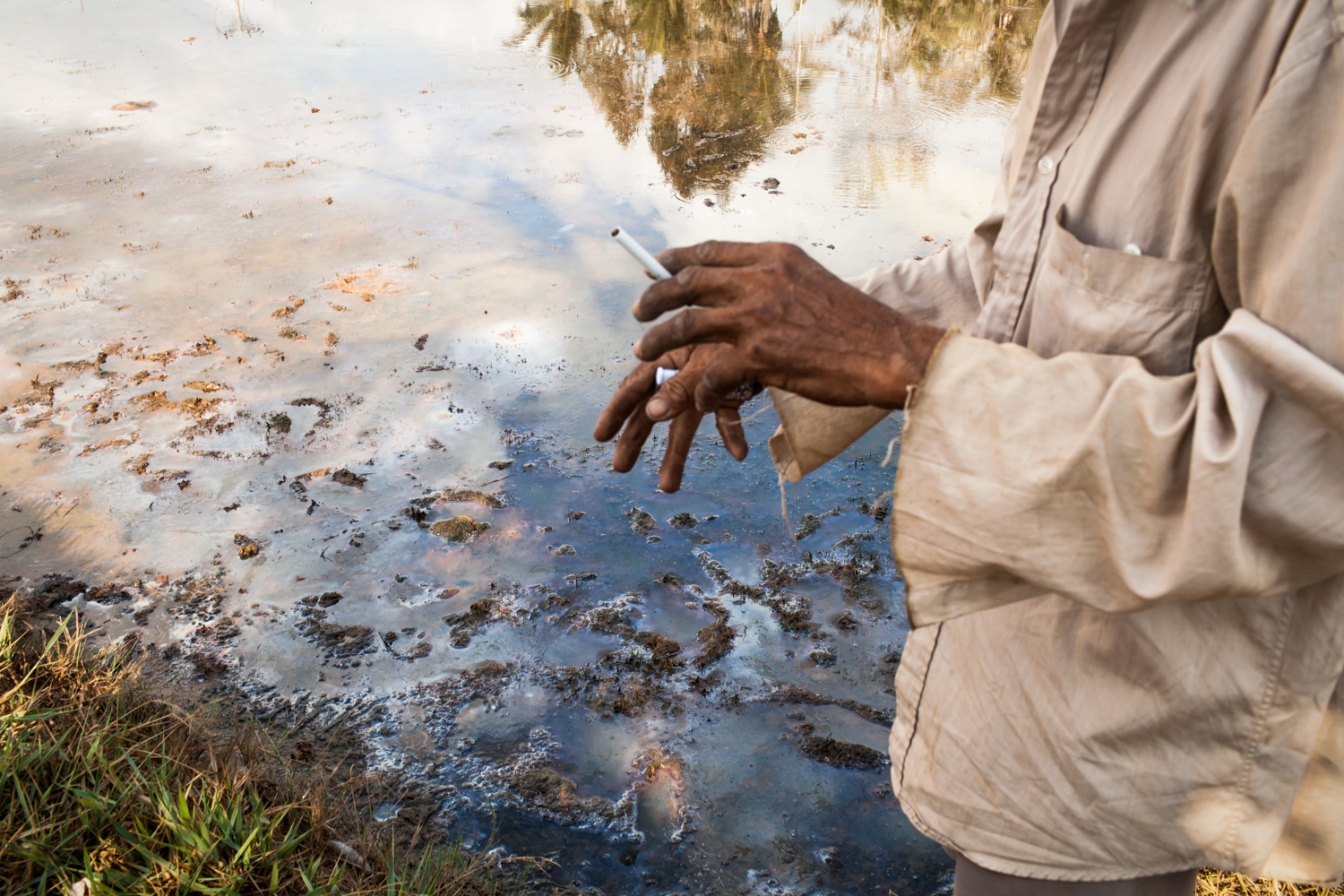

It's not only the crops that are suffering, the animals are affected too. The salt water in Ben Tre intruded before the Lunar New year and the river water became too salty for the animals to drink.
April 27, 2016. Phuong dug a well for his pigs but the water is still salty and their growth has been stunted. They are 4-5 months old and normally would be approaching their selling weight of 100kg. They are only 50kg now and Phuong said he would wait till the rains come and try to get them to 70kg . A 100kg pig would sell for for $50 and this translates into $10 profit for each pig. He hopes to at least break even this year but a loss is a possibility.
Like most people in the Delta Phuong's rainwater tanks where full at the end of the rainy season and this would usually be enough to get them through the dry season. This year he ran out of water in February and he has had the added expense of having to purchase water for washing and drinking. His well that he is using for his pigs water is pictured in the foreground.
April 27, 2016. Phuong's neighbour Thi Dep, 70, looks out to her lime tree plantation that is suffering the effects of the saltwater intrusion. She told us that her yield had been reduced and the fruits where smaller and less succulent.
May 7, 2016. Puong, is illiterate and she has little knowledge of the effects of saltwater intrusion. Her Zucchini's are growing but the harvest is reduced, most of her tomatoes where killed and she made no profit on them. She has available land though and she will try planting watermelon next.
The canals that run beside her gardens are dried out as pictured below.
May 8, 2016. Well water affected by the salt water intrusion is used to water a dying Casava plantation on the island of Cu Lao Dung in Soc Trang .
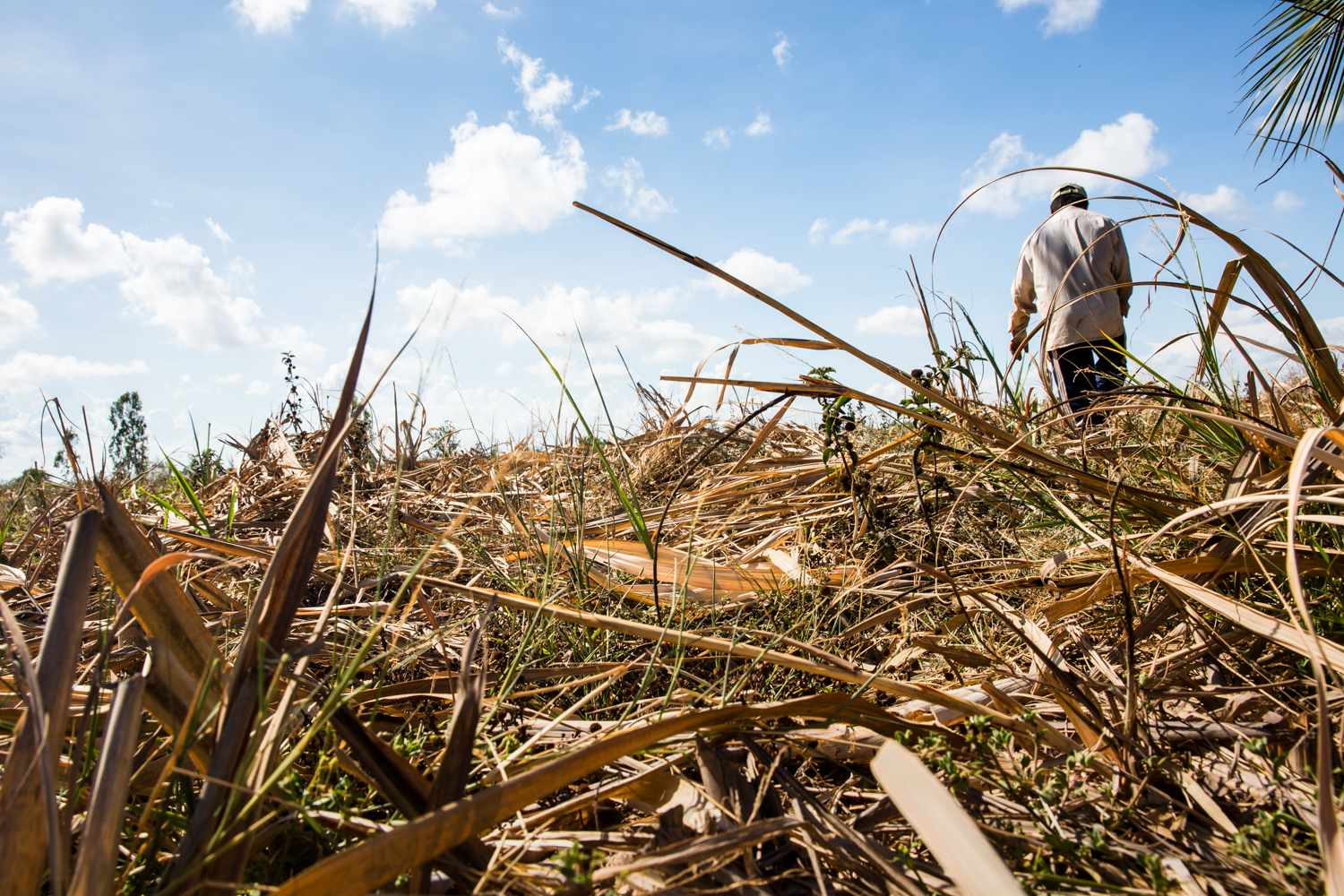
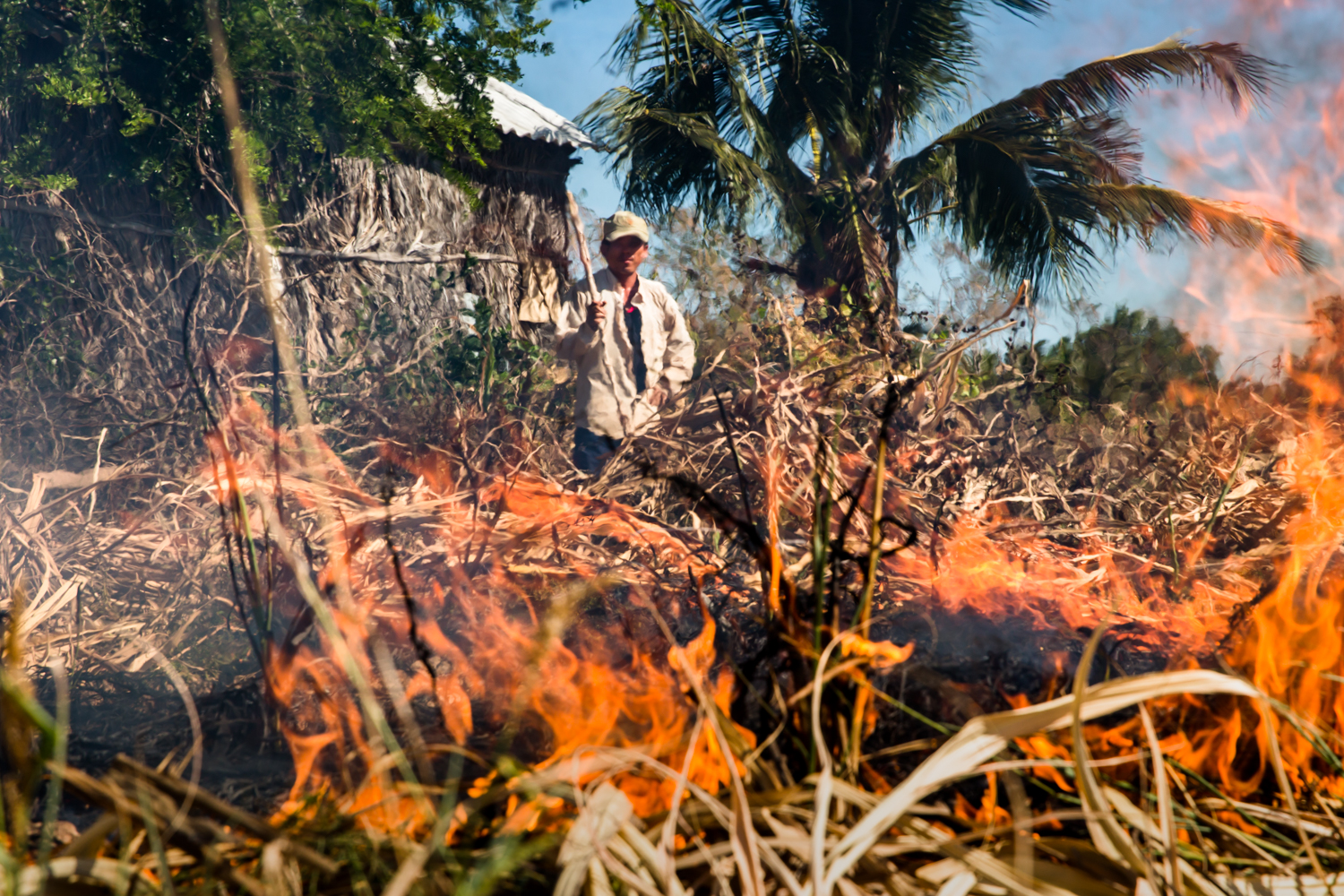
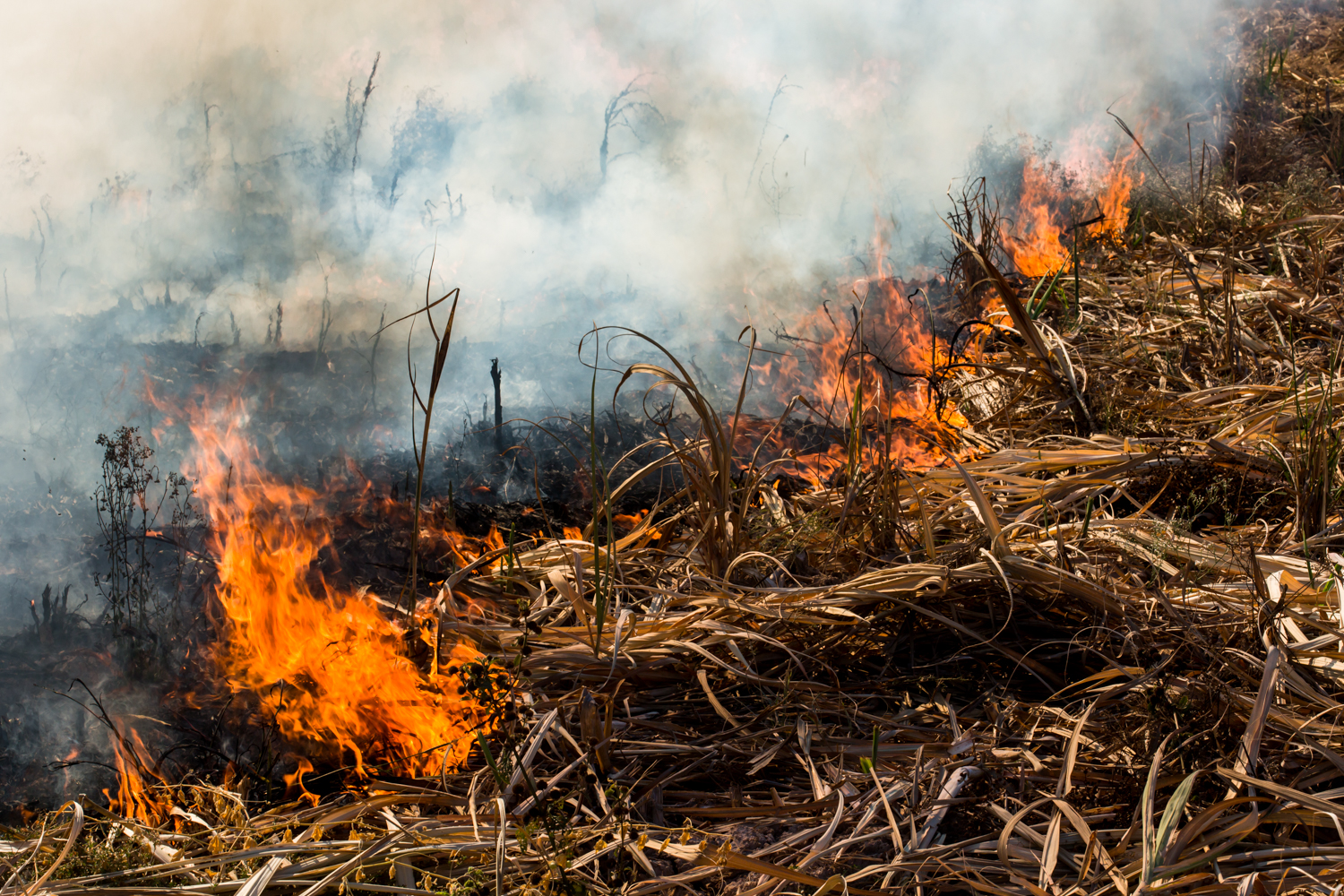
May 8, 2016. Having lost his entire sugarcane crop Tam, 40, starts the arduous process of preparing his 3 hectares for another season. He is decided not to employ anyone to help so that he can save money. He works on other farms to make additional income.
May 8, 2016. After a year of troubles on his rented land, Vu, 38, is converting the 3.5 hectares of rice fields into a sugarcane field. He hopes to have better luck than some of his neighbours whom have lost large percentages of their sugarcane plantations.
May 8, 2016. Hai, 52, (left) supervises the weigh in of his sugarcane harvest. He has 2 sugarcane fields in different areas on Cu Lao Dung. He lost his smaller 2 hectare field but luckily his larger 4 hectare field has survived. Despite the loss he says he will make a profit this year, he told us that only 30% of families in the area are making a profit from their land.
May 8, 2016. For others the realities of the drought have had much bigger impacts. Chi and her husband lost half their sugarcane yield. They have been trying to sell their yield for $0.35 per kilogram but they have not found a buyer yet. To make ends meet they are renting a house on one of the main roads where they sell sugarcane juice and bread to passers bye. Chi's biggest worry though is that her baby girl was born with a heart condition. Her baby requires an operation that will cost $5000 but Chi doesn't have the money for it. She says that even her profits from the shop are reduced as many people on Cu Lao Dung island have left and are now working in the factories.
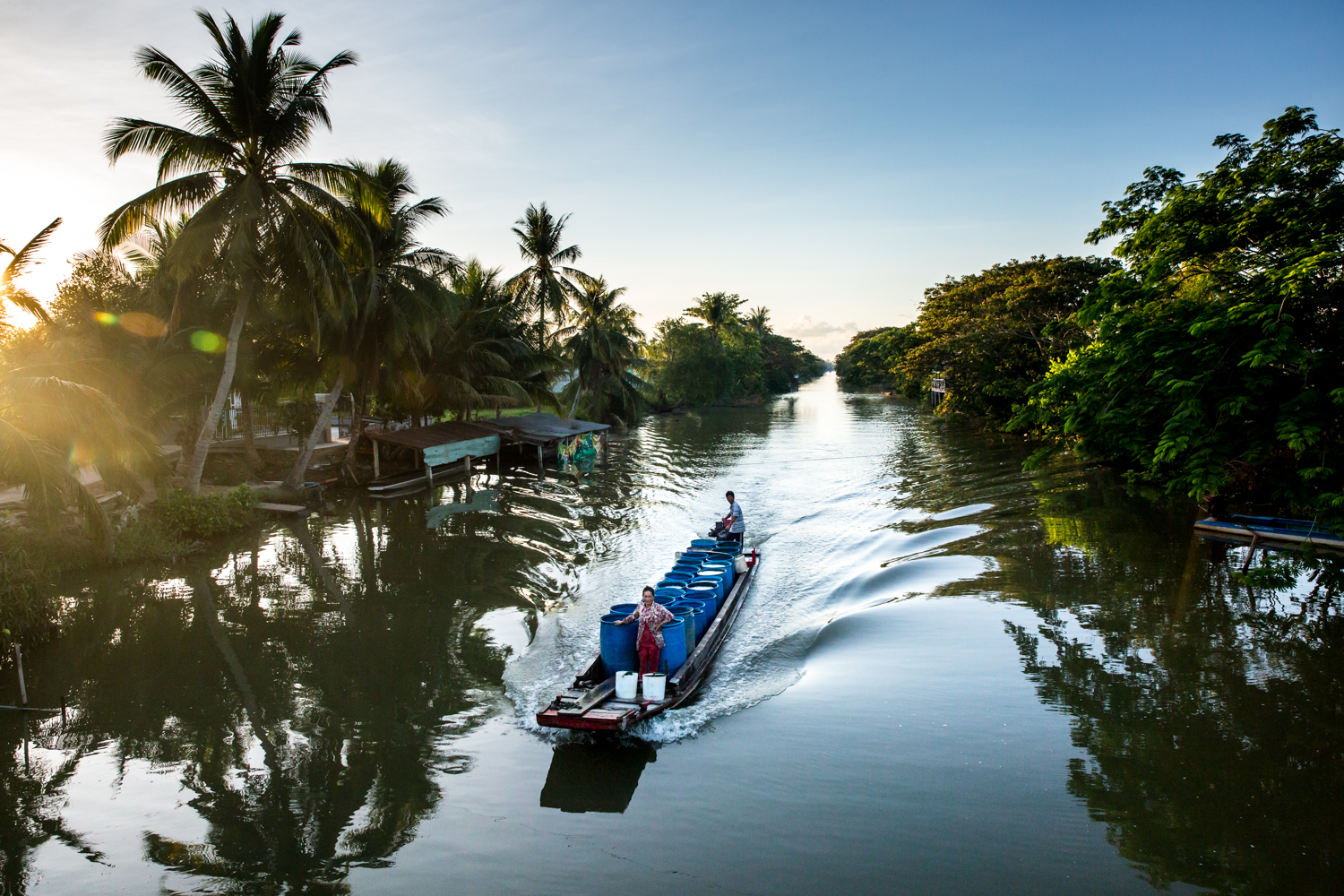
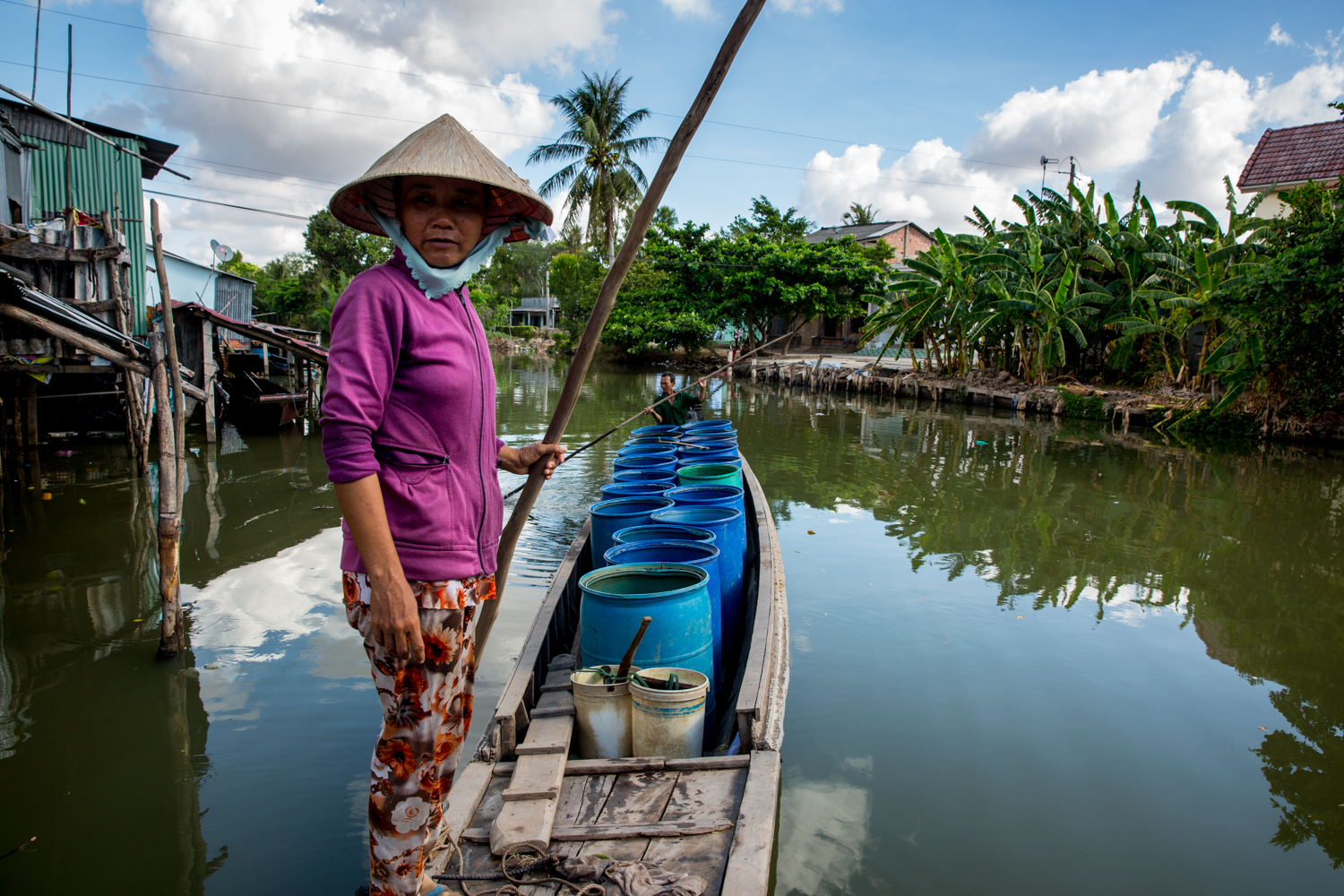
May 9, 2016. Business is not bad for everyone as evidenced by the number of boats selling water on the waterways in Soc Trang. Due to the lack of rain now most farmers need to buy water for their daily needs. Nga, 47, told us that business started earlier this year and that she and her husband have been selling more as many people have run out of water.
May 7, 2016. Chanh, 32, told us that he has planted Coriander, Chinese Broccoli, Chillies and Morning Glory but all of them have died. While he awaits the rains he has taken work in Shrimp Farms that are an hrs drive away in Vinh Chau. He earns $5 per day in the shrimp farm. He said that of the 10 families in the area that 50% of them have now left to work in factories in Binh Duong.
May 8, 2016. On our way back to Soc Trang we passed a sugarcane mill on the Saintard River. With agriculture in decline perhaps factories like these are the future of the area.
